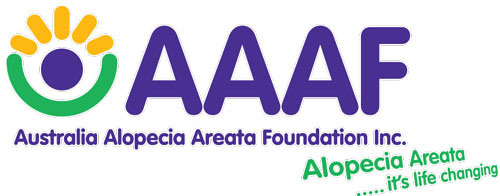Hair loss occurs for many reasons. On this page, you will find the most up to date treatment information for autoimmune hair loss (Alopecia Areata).
While the cause is unknown, there is neither a cure or a single treatment for Alopecia Areata. Understanding the genes, hair follicle development, immune treatments, stem cells in the skin, some people find that medications approved for other purposes can help hair grow back, at least temporarily. Scientists continue to study what causes Alopecia Areata.
Consult your health care professional about the best option for you.
The following are treatments offered for Alopecia Areata.
- Immunomodulators
Immunomodulatory drugs — specifically, Janus kinase (JAK) inhibitors — are a new type of therapy being tested for Alopecia Areata. In May 2023, Olumiant -Baricitinib got TGA approval for the treatment of Alopecia Areata.
- Corticosteroids
Corticosteroids are powerful anti-inflammatory drugs similar to a hormone called cortisol produced in the body. They can be delivered via local injections, oral tablets or topical ointments. Which option your dermatologist might suggest will depend on the type and extent of your Alopecia Areata.
- Topical sensitizers
Topical sensitizers are medications that, when applied to the scalp, provoke an allergic reaction that leads to itching, scaling, and eventually hair growth. Two topical sensitizers are used in Alopecia Areata treatment; squaric acid dibutyl ester (SADBE) and diphenylcyclopropenone (DPCP).
- Minoxidil (5%)
Minoxidil is used in the treatment for male and female pattern hair loss and may also be useful in promoting hair growth in Alopecia Areata. A topical solution, applied twice daily may be used on the scalp, brow, and beard areas.
- Anthralin
Also known as Dithrandol, a synthetic tar-like substance that alters immune function in the affected skin,is applied to the hairless patches once a day and then washed off typically after a period of time ranging from 30 minutes to a few hours.
- Platelet-Rich Plasma (PRP)
PRP therapy for hair loss is a treatment that nvolves withdrawing a patient’s own blood, processing it so that only the enriched cells (platelet-rich plasma) remain, and injecting it into the scalp. As a concentrated source of autologous platelets, PRP contains several different growth factors and other cytokines that can stimulate healing of soft tissue. It is a relatively new form of treatment being used for androgeneic alopecia (also known as male or female pattern baldness) and is being assessed as a treatment for alopecia areata.
Alternative Therapies
When drug treatments fail to bring sufficient hair regrowth, some people turn to alternative therapies. It is important to note that alternative therapies are often not backed by clinical trials. You should always consult with your qualified health care professional before trying alternate therapies.
Alternative therapies for treating Alopecia Areata can range from acupuncture, reiki, meditation, thought field therapy, aroma therapy, evening primrose oil, zinc, vitamin supplements, to Chinese herbs. Some people with Alopecia Areata recommend a holistic approach to bodily health, and suggest checking things like digestive health and overall stress and lifestyle factors.
- Trichologists
Trichologists specialise in all forms of hair loss, hair shaft breakage, scalp disorders, and the scalp environment. Academic trichology is a paramedical area of health care that embraces both naturopathic & western medicine, endocrinology and dermatology.
- Scalp Micro Pigmentation
Scalp Micro Pigmentation (SMP), is a specialised tattooing process during which tiny deposits of pigment are positioned within the dermal layer of the skin. This creates the same visual effect as a shaved head. Can be very affective at disguising the appearance of hair loss.
- Hair Growth Based Vitamin Products
There are many hair growth products on the market that claim to regrow hair. It is important to understand the type of Alopecia Areata that you have and review the hair growth products that are aligned to your condition.
Finding a Health Professional
- The Australasian College of Dermatologists – Website
- The Australian Dermatology Nurses Association – Website
To find more articles containing medical information, please CLICK HERE.

